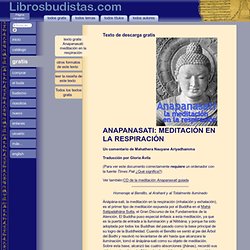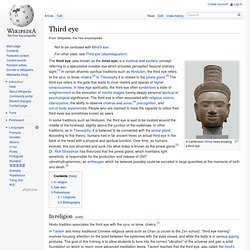

Una conferencia por Jorge Luis Borges. El tema de hoy será el budismo.

No entraré en esa larga historia que empezó hace dos mil quinientos años en Benares, cuando un príncipe de Nepal - Siddharta o Gautama -, que había llegado a ser el Buddha, hizo girar la rueda de la ley, proclamó las cuatro nobles verdades y el óctuple sendero. Hablaré de lo esencial de esa religión, la más difundida del mundo. Los elementos del budismo se han conservado desde el siglo v antes de Cristo: es decir, desde la época de Heráclito, de Pitágoras, de Zenón, hasta nuestro tiempo, cuando el doctor Suzuki la expone en el Japón. Los elementos son los mismos. La religión ahora está incrustada de mitología, de astronomía, de extrañas creencias, de magia, pero ya que el tema es complejo, me limitaré a lo que tienen en común las diversas sectas. Esa longevidad puede explicarse por razones históricas, pero tales razones son fortuitas o, mejor dicho, son discutibles, falibles. Un yugo, una disciplina que el hombre se impone. Además, hay otra razón. MEDITACIÓN EN LA RESPIRACIÓN.
(Para ver este documento correctamente requiere un ordenador con la fuente Times Pali ¿Qué significa?)

Homenaje al Bendito, al Arahant y al Totalmente Iluminado Ànàpàna-sati, la meditación en la respiración (inhalación y exhalación), es el primer tipo de meditación expuesta por el Buddha en el Mahà Satipaååhàna Sutta, el Gran Discurso de los Fundamentos de la Atención. El Buddha puso especial énfasis a esta meditación, ya que es la puerta de entrada a la iluminación y al Nibbàna; y porque ha sido adoptada por todos los Buddhas del pasado como la base principal de su logro de la Buddheidad.
Cuando el Bendito se sentó al pie del Árbol del Bodhi y resolvió no levantarse de ahí hasta que alcanzara la iluminación, tomó el ànàpàna-sati como su objeto de meditación. Ofrezcamos, entonces, nuestra veneración al Bendito, ese alguien que llegó a ser un Buddha incomparable trascendiendo al mundo a través de esta meditación ànàpàna-sati. El Buddha ilustra esto con un símil. (i) Conteo (gaäanà) Meditation: Clearing Negativity. Third eye.
A Cambodian Shiva head showing a third eye.

In some traditions such as Hinduism, the third eye is said to be located around the middle of the forehead, slightly above the junction of the eyebrows. In other traditions, as in Theosophy, it is believed to be connected with the pineal gland. According to this theory, humans had in far ancient times an actual third eye in the back of the head with a physical and spiritual function. Over time, as humans evolved, this eye atrophied and sunk into what today is known as the pineal gland.[3] Dr. Rick Strassman has theorized that the pineal gland, which maintains light sensitivity, is responsible for the production and release of DMT (dimethyltryptamine), an entheogen which he believes possibly could be excreted in large quantities at the moments of birth and death.[5] In religion[edit] Hindu tradition associates the third eye with the ajna, or brow, chakra.[1] Adherents of theosophist H.P. See also[edit] References[edit] Citations[edit]
Learning Meditation Home Page. Meditation. Spirtual Enligtenment. Third eye. The Beginner’s Guide to Zen Habits – A Guided Tour. By Leo Babauta I know a lot of people who fall into a slump, losing the habit of exercise, procrastinating with work, slipping into a bad diet, and generally not feeling motivated.

It’s hard to get out of a slump like that. It’s hard to get going again, to get started when all the forces of inertia are against you. Here’s how to get started, in just a few easy steps. Pick one thing. With every single step, you’ll feel better. Just announced: Dealing with Your Struggles video course. Falling Down the TM Rabbit Hole, How TM Really Works, a Critical Opinion.